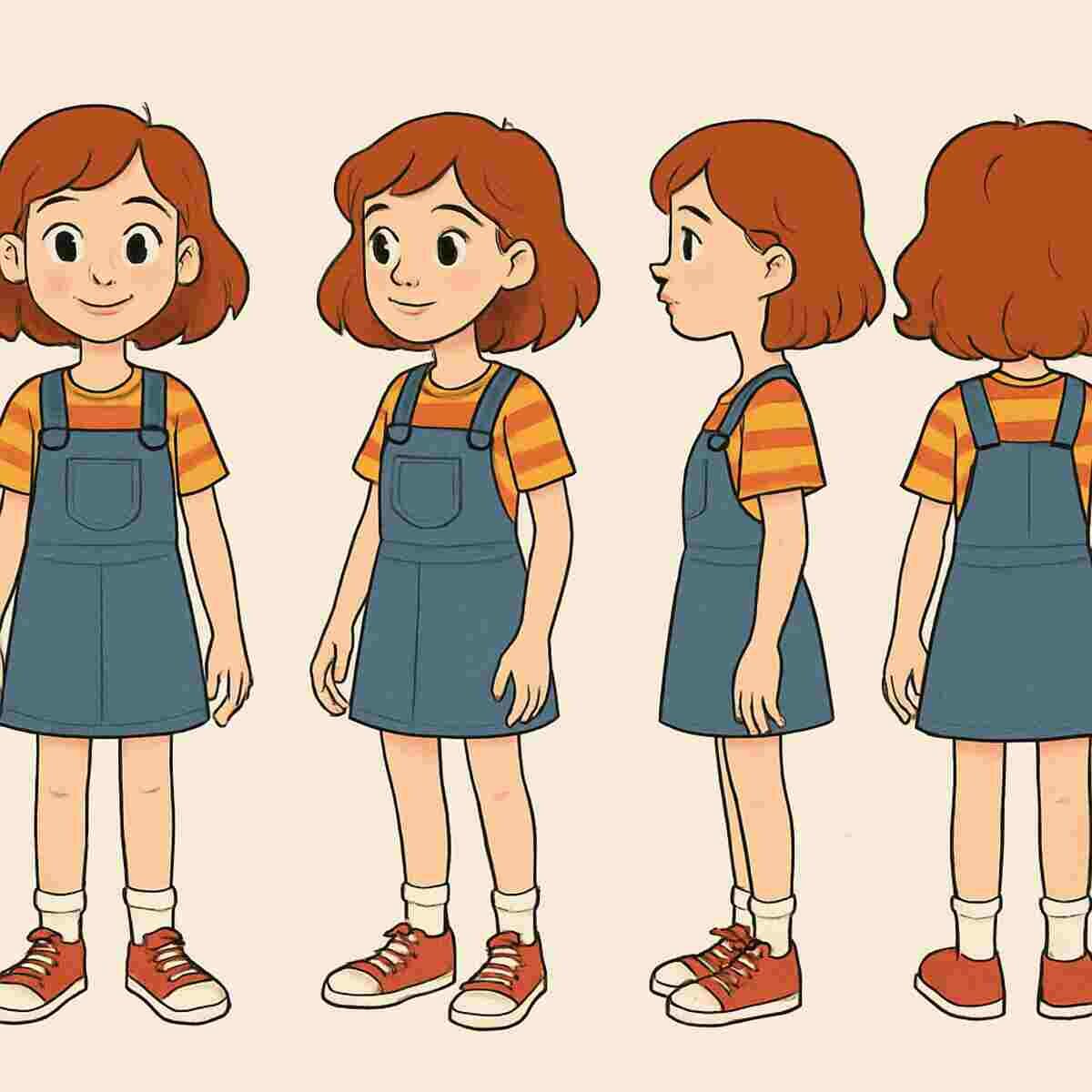Hello, dear readers! Today, we’re diving into the exciting world of “Udne Ki Asha,” a story that’s capturing hearts and sparking imaginations everywhere. Whether you’re an aspiring novelist, a content marketer, or a graduate student, understanding the intricacies of storytelling can be incredibly beneficial. So, let’s explore the latest updates on “Udne Ki Asha” and see how you can apply these insights to your own writing journey. Read the Best info about SerialGossip.
Characters are the heart and soul of any story. They’re what makes a tale truly memorable and engaging. In “Udne Ki Asha,” character development plays a pivotal role. By exploring the growth and transformation of its characters, the story captivates its audience and keeps them invested.
The Essence of a Strong Character
Creating a strong character begins with understanding their core essence. This involves delving into their psyche and understanding their deepest desires and fears. Readers need to connect with the character on an emotional level, which often stems from how real and relatable they appear. The essence of a character is what makes them human, what makes their journey believable and compelling.
The Journey of Transformation
Transformation is a critical component of character development. A character’s journey from who they are at the beginning to who they become by the end is what keeps readers hooked. This transformation should feel earned and organic, stemming from the character’s experiences and choices. In “Udne Ki Asha,” each character’s transformation is intricately woven into the narrative, making the readers empathize and root for them.
Creating Multi-Dimensional Characters
One-dimensional characters rarely leave a lasting impression. To create memorable characters, they must be multi-dimensional with complex personalities. This involves giving them a mix of strengths and weaknesses, motivations and fears, and dreams and regrets. Multi-dimensional characters reflect the complexity of real human beings, making them more relatable and engaging to the readers.
Tips for Character Development
- Start with a Character Sketch: Think about your character’s background, motivations, and desires. What drives them? What are their fears and hopes? Creating a detailed sketch helps in visualizing the character and their journey.
- Show, Don’t Tell: Let your characters reveal themselves through their actions and dialogue. Instead of saying a character is brave, show them facing their fears head-on. This technique allows the reader to infer traits and intentions, creating a more immersive experience.
- Create Conflict: Characters grow through challenges. Introduce obstacles that force them to make tough decisions and evolve. Conflict is the catalyst for change, pushing characters out of their comfort zones and into growth.
- Give Them Quirks: Unique traits or habits make characters memorable. Whether it’s a love for collecting stamps or an aversion to technology, these quirks add depth. They can serve as metaphors for larger aspects of the character’s personality or as a means to create relatability and humor.
By incorporating these tips, you can create characters as compelling as those in “Udne Ki Asha.”
The Latest Updates on “Udne Ki Asha”

The buzz around “Udne Ki Asha” is all about its upcoming story arcs and character developments. Fans are eagerly awaiting the next chapters, filled with twists and turns that promise to keep them on the edge of their seats.
Anticipated New Characters
The introduction of new characters can revitalize a storyline and add fresh dynamics. Each new character in “Udne Ki Asha” is expected to bring their own unique storylines and challenges, contributing to the richness of the narrative. These characters are not just additions but integral pieces that will interact with existing ones, leading to intricate relationships and conflicts that enhance the story.
Plot Twists that Surprise
“Udne Ki Asha” is known for its unexpected plot twists that keep readers guessing. These surprises are carefully crafted to subvert expectations while remaining true to the story’s core themes. The narrative’s ability to surprise not only maintains reader interest but also adds layers of meaning and complexity to the plot, making each twist feel both shocking and inevitable.
Exploring Deeper Backstories
Backstories provide context and depth to characters, making their actions and decisions more understandable. In upcoming chapters, “Udne Ki Asha” plans to delve deeper into the histories of its main characters. This exploration will reveal hidden motivations and secrets, adding layers to the characters and allowing readers to see them in a new light. Understanding a character’s past can dramatically change how the audience perceives their present and future actions.
These updates not only excite fans but also provide a wealth of inspiration for writers looking to enhance their storytelling skills.
Crafting Engaging Plots
Creating an engaging plot is akin to weaving a tapestry; each thread must be perfectly placed to create a cohesive and compelling story. “Udne Ki Asha” masters this by skillfully balancing tension and resolution, ensuring that readers are constantly engaged.
The Importance of a Strong Outline
A strong outline serves as the backbone of any engaging plot. It helps writers organize their thoughts and structure the story in a way that flows logically. In “Udne Ki Asha,” the outline is meticulously crafted to ensure that every scene builds upon the last, leading to a satisfying narrative arc. An outline can also serve as a guide, keeping the writer focused and on track as they weave their tale.
Introducing Conflict and Stakes
Conflict is the driving force of any plot. In “Udne Ki Asha,” conflict is introduced early to grab the reader’s attention and establish the stakes. These conflicts are not just physical but also emotional and psychological, providing a well-rounded experience. By understanding what is at stake, readers become more invested in the outcome, rooting for the characters to overcome their challenges.
Building Toward a Climax
The climax is the story’s turning point, where tensions reach their peak. It is the moment that the entire narrative has been building toward. In “Udne Ki Asha,” the climax is carefully constructed to deliver maximum emotional impact. It is not just about resolving the plot but also about providing closure to the characters’ arcs, making it a rewarding experience for the reader.
Steps to Develop a Captivating Plot
- Outline Your Story: Start with a basic structure. Identify the beginning, middle, and end of your story. This helps in maintaining a clear direction and focus throughout the writing process.
- Introduce Conflict Early: Grab your readers’ attention by introducing the main conflict early in the story. This sets the stage for the narrative and gives readers a reason to keep turning the pages.
- Build to a Climax: Increase tension as you move towards the climax, where the main conflict reaches its peak. The buildup should be gradual, ensuring that the climax feels like a natural and powerful culmination of the events.
- Resolve Satisfactorily: Ensure your ending provides closure. Loose ends should be tied up, leaving readers satisfied. An effective resolution not only wraps up the plot but also underscores the themes and messages of the story.
By following these steps, you can create plots that captivate and intrigue, much like the narrative of “Udne Ki Asha.”
Dialogue: Bringing Characters to Life
Dialogue is an essential tool for character development and plot progression. In “Udne Ki Asha,” dialogue is used effectively to reveal character traits and advance the story.
Capturing Realism in Dialogue
Authenticity is key to effective dialogue. Realistic dialogue captures the nuances of actual speech, complete with interruptions, hesitations, and quirks. In “Udne Ki Asha,” dialogue is crafted to reflect the characters’ personalities and backgrounds, making their interactions feel genuine. Listening to real conversations can provide valuable insights into how people express themselves, offering inspiration for creating believable dialogue.
The Power of Subtext
What characters say is often less important than what they mean, and this is where subtext comes into play. Subtext adds depth to conversations, revealing hidden meanings and emotions beneath the surface. In “Udne Ki Asha,” subtext is used to convey tension and unspoken feelings, enriching the interactions between characters and adding layers of complexity to the narrative.
Crafting Concise and Purposeful Exchanges
Effective dialogue is concise and serves a purpose. Each line should either advance the plot or reveal something about the character. In “Udne Ki Asha,” dialogue is kept tight and focused, ensuring that every exchange contributes to the overall story. Avoiding unnecessary chit-chat keeps the narrative moving and maintains reader interest.
Giving Characters a Unique Voice
Each character should have a distinct voice that reflects their personality, background, and role in the story. In “Udne Ki Asha,” characters are given unique speech patterns and vocabularies, helping them stand out and feel real. A unique voice also aids in character differentiation, making it easier for readers to follow the dialogue and understand who is speaking.
By honing your dialogue-writing skills, you can make your characters more relatable and your stories more engaging.
Practical Tips for Writers
Whether you’re crafting the next bestselling novel or an impactful blog post, here are some practical tips inspired by “Udne Ki Asha”:
Cultivating a Writing Habit
Consistency is key to developing your writing skills. Set aside dedicated time each day to write, even if it’s just a few paragraphs. This habit not only improves your writing but also helps overcome writer’s block. By committing to a regular writing routine, you can make steady progress and build confidence in your abilities.
Expanding Your Literary Horizons
Reading widely exposes you to different styles, genres, and perspectives, enriching your own writing. In “Udne Ki Asha,” diverse influences are evident in the storytelling techniques and character development. By exploring various genres and authors, you can discover new ideas and approaches that inspire your own work, broadening your creative horizons.
Embracing Constructive Criticism
Feedback is an invaluable tool for growth. Sharing your work with others and being open to constructive criticism can provide new insights and help you identify areas for improvement. In “Udne Ki Asha,” the creators actively engage with their audience, using feedback to enhance the story. Embracing feedback not only improves your writing but also helps you develop a thicker skin and a more objective view of your work.
The Art of Revision
Great writing often lies in the rewriting. Revising and refining your work is an essential part of the creative process. In “Udne Ki Asha,” careful editing and revision have helped shape the story into a polished and engaging narrative. Don’t be afraid to make changes, cut unnecessary parts, and rework sections until your writing shines.
Conclusion
“Udne Ki Asha” is more than just an intriguing story; it’s a masterclass in storytelling that offers invaluable lessons for writers of all levels. By understanding character development, crafting engaging plots, and writing authentic dialogue, you can elevate your writing and captivate your audience.
So, what are you waiting for? Dive into the world of “Udne Ki Asha” and let it inspire your own creative journey!
Happy writing, and may your stories take flight just like “Udne Ki Asha.”
